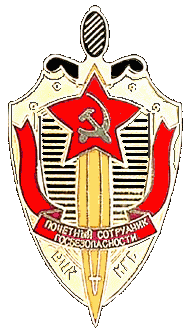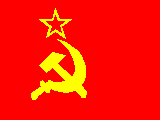 Intelligence and Counterintelligence
Intelligence and Counterintelligence
KGB intelligence gathering in the West increased markedly after the era of d�tente began in 1972. D�tente permitted a vast influx of Soviet and East European diplomatic, cultural, and commercial officials into the United States and other Western countries. KGB officers and their East European counterparts operated under various guises, posing as diplomats, trade officials, journalists, scientists, and students. The proportion of Soviet citizens abroad who were engaged in intelligence gathering was estimated to range from 30 to 40 percent in the United States to over 50 percent in some Third World countries. In addition, many Soviet representatives who were not intelligence officers were nevertheless given some sort of assignment by the KGB.
Apparently, the First Chief Directorate had little trouble recruiting personnel for its foreign operations. The high salaries, military rank, access to foreign currency, and opportunity to live abroad offered attractive enticements to young people choosing a career. First Chief Directorate recruits were usually graduates of prestigious higher education institutions and had knowledge of one or more foreign languages. The KGB had a two-year postgraduate training course for these recruits at its Higher Intelligence School located near Moscow. The curriculum included the use of ciphers, arms and sabotage training, history and economics according to Marxist-Leninist (see Glossary) theory, CPSU history, law, and foreign languages.
The KGB was the primary agency responsible for supplying the Kremlin with foreign intelligence. According to former Soviet diplomat Arkady Shevchenko, Moscow cabled out questions on a daily basis to KGB rezidenty abroad to guide them in their tasks. In addition to political intelligence, KGB officers concentrated increasingly on efforts to acquire advanced Western technology. The KGB reportedly acted as a collector of militarily significant Western technology (in the form of documents and hardware) on behalf of the Military Industrial Commission of the Presidium of the Council of Ministers. This commission coordinated the development of all Soviet weapons systems, along with the program to acquire Western technology, and it levied requirements among the KGB, the Main Intelligence Directorate (see Glossary), and several other agencies, including those of East European intelligence services. The KGB and the GRU increased their technical collection efforts considerably in the early 1980s, when the number of requirements levied on them by the Military Industrial Commission rose by about 50 percent.
The Andropov era saw a greater orientation in the KGB toward electronic espionage--communications intercepts and satellites--to supplement intelligence gathered by agents. According to Robert Campbell, the Soviet Union deployed at least three satellites for intelligence collection. Some of the intelligence may have been strictly military and therefore collected by the GRU, but the KGB reportedly also made use of these satellites.
Data as of May 1989
Sources and Methods
- Chapter 19. Internal Security, SOVIET UNION - A Country Study Library of Congress Federal Research Division - 1989



